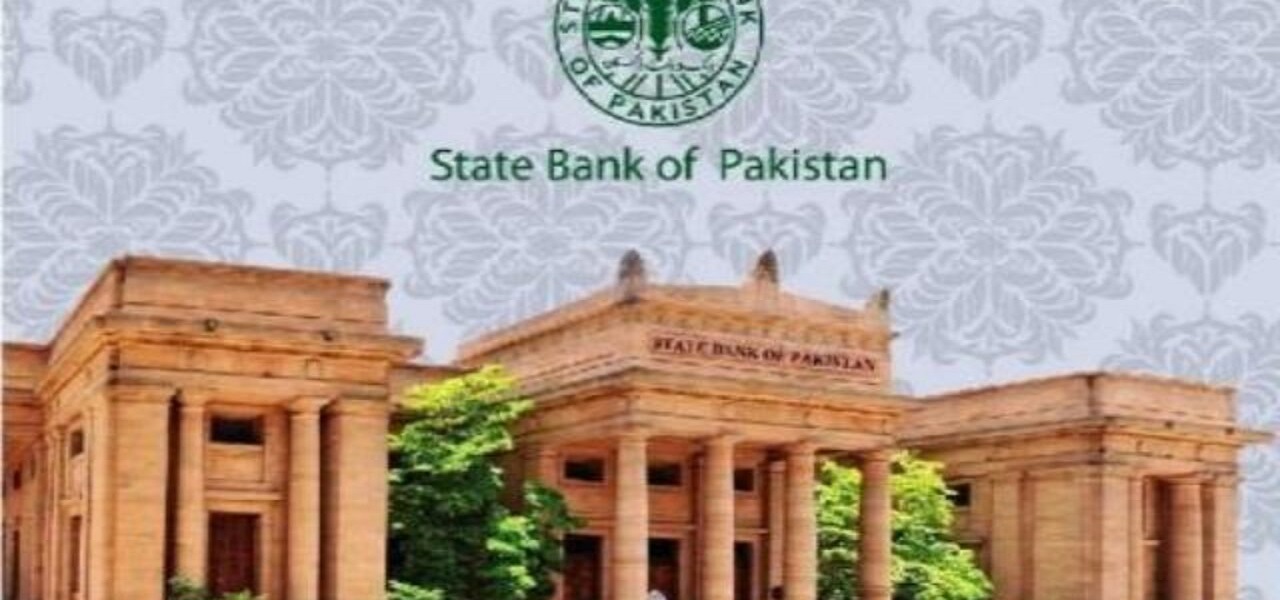KARACHI: The State Bank of Pakistan (SBP) has maintained the GDP growth forecast up to 5 per cent for the fiscal year 2021/22, the central bank stated in a review released on Thursday.
The forecast is in line with the government’s target of 4.8 per cent and higher than last year’s provisional growth of 3.9 per cent, according to a quarter review (July–September) 2021/22 of Pakistan Economy.
The better-than-expected agricultural output and growing industrial activity, with positive spillover on the services sector, are projected to contribute to the higher growth outcome.
The reversal in the monetary policy stance from September onwards, which has resulted in a 175bps increase in the policy rate until November, revisions in prudential regulations for auto and consumer financing, and a 1 percentage point increase in the cash reserve requirement for commercial banks are projected to lead to a slight slowdown in the industrial growth compared to earlier expectations.
Further, the overall credit conditions are expected to somewhat tighten in the wake of the policy rate hike.
“However, the major export-oriented industries, especially textiles and rice, would be largely shielded from the impact by their continued access to the SBP’s concessionary refinance schemes; despite the rise in the policy rate, mark-up rates on these refinance schemes are still unchanged at low levels,” the SBP said.
The slight slowdown in industrial activity is expected to be more than offset by the encouraging agricultural performance, based on output estimates of major kharif crops so far.
Additionally, with the assumption that the higher target for wheat set by the government, from an already record-high output last season, will be met, which is also expected to play its role in offsetting the slowdown in the industrial activity.
The government is targeting to reduce the fiscal deficit to 6.3 per cent in fiscal year 2022 from 7.1 per cent in fiscal year 2021, by increasing revenues via expansion in the tax net and the ongoing growth momentum, which would contribute to tax collection.
The recent proposed cuts to development spending, imposition of additional duties on automobiles and luxury goods, and the withdrawal of a wide range of tax exemptions, are all expected to further improve the fiscal position.
Meanwhile, the downside risks to the fiscal outlook include a slowdown in the economic activity, which would impact the tax revenues.
A major reason for the uncertainty with regards to the economic outlook is the emergence of new Covid variants, which directly impact the global commodity prices, the policy rate path in the advanced economies; demand dynamics in major export markets; supply chain disruptions; and international travel by Pakistani residents, which could impact the current account.
The oil prices have appeared particularly prone to downward movements following the discovery of new Covid variants, including Delta and Omicron. In addition, the evolving situation in Afghanistan is another source of uncertainty.
For the fiscal year 2022, the SBP is projecting headline CPI inflation to remain higher than the fiscal year 2021’s reading of 8.9 per cent.
The risks are tilted towards the upside, mainly due to the higher-than-expected increase in global prices of commodities imported by Pakistan, including oil, coal and liquefied natural gas (LNG), and non-energy items such as edible oil, cotton and steel, among others.
Further impetus has come from the likely upward adjustments in the administered prices, including power tariffs and taxes on transport fuels e.g., general sales tax and petroleum development levy, as well as the rupee depreciation so far.
These pressures have also begun to seep into pricing expectations of consumers and businesses, as gauged from the SBP’s Consumer and Business Confidence Surveys.
In contrast, prominent downside risks to the inflation outlook include a sharp drop in oil prices and higher-than-expected moderation in industrial activity amidst normalisation of monetary and fiscal policies.
The current account deficit is also projected to exceed last year’s level of 0.6 per cent of GDP by a wide margin, mainly due to a higher-than-accounted for trade deficit, stemming from the rising trend in worldwide commodity prices.
While the recent adjustment in the policy rate would somewhat constrain import demand, import payment pressures are expected from capital goods imports and from the continued need to import Covid-19 vaccines.
While the export receipts are also projected to rise, they are not likely to offset the rise in import payments. On the other hand, downside risks to the current account gap mainly relate to a sharp drop in the global commodity prices and freight costs.
The external account is expected to remain manageable, given that the automatically stabilising rupee is now complemented by the necessary monetary policy tightening.
The country’s financing requirements i.e., the expected current account gap and the upcoming debt repayments are projected to be fully met by the available financial flows.
The approval of the staff-level agreement by the International Monetary Fund (IMF) Board in the second half of fiscal year 2022 would unlock around $1 billion from direct Fund financing, and facilitate continued engagement with other multilaterals.
In addition to the $3 billion deposits from the Saudi Fund for Development, a planned sovereign Sukuk by the government would further help build the SBP’s forex reserves.















